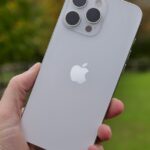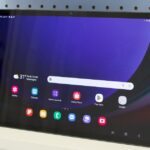The iPhone 16e has been announced by Apple, with the A18 chipset, a USB-C port, Apple Intelligence, excellent battery life (according to Apple), but no MagSafe support or always-on display.
While the spotlight always seems to be on Apple’s mainline iPhones, the iPhone 16e is a great pick for those who are on more of a budget. If you want an iPhone that doesn’t break the bank, the 16e may be the way to go, but this is by no means a cheap phone. It’s just more affordable than the rest of the iPhone 16 series.
The original iPhone SE came out in 2016, and then Apple revamped it in 2020 and 2022 by giving it some more modern hardware. Apple has rejigged the naming for its most affordable iPhone, with the 16e sitting at the base of the iPhone 16 family.
Please enable Javascript to view this content
iPhone 16e release date and price
The iPhone 16e price is $599. That’s higher than expected, with rumors leading up to the launch suggesting it would fall somewhere in the $450-$500 bracket. The iPhone SE 3 which it’s technically replacing was listed at $429 before being pulled from sale ahead of the 16e launching.
The iPhone 16e release date is set for February 28, 2025, with iPhone 16e pre-orders opening a week before on February 21, 2025.
iPhone 16e design
The iPhone 16e looks very similar to the iPhone 12. The 6.1-inch display dominates the front, with the Face ID notch interrupting its top edge. Round the back you’ll find just a single camera (rather than the dual setup on the 12).
Apple says the iPhone 16e has the toughest back glass in a smartphone, while the screen is covered with the company’s Ceramic Shield technology which it claims is tougher than any smartphone glass. The iPhone 16e should be able to handle a few drops and knocks in everyday life then.
Button placement is where you’d expect for an iPhone, with the power key on the right, and a trio of buttons on the left with the action button sitting above the volume up and down keys.
MagSafe is not included in the iPhone 16e, which means any MagSafe accessories you may have will not be compatible with this handset. There is, however, a USB-C port for charging, and with the iPhone SE 3 now off sale the Lightning port has been completely removed from the iPhone range.
iPhone 16e colors
The iPhone 16e is available in just two colors, black or white. Gone are the days of plentiful color options. If you want a wider selection of hues, you’ll need to pay more for another member of the iPhone 16 family.
iPhone 16e display
The iPhone 16e comes with a 6.1-inch OLED screen, with a 2532 x 1170-pixel resolution and 460 ppi pixel density. The Super Retina XDR display’s max brightness is 800 nits, while it can achieve a peak brightness of 1,200 nits.
A feature it doesn’t have that the rest of the iPhone 16 family does in the always-on display. If you want to check for messages, or just see the time, you’ll need to manually wake the screen of the 16e.
iPhone 16e power
The iPhone 16e comes with Apple’s A18 chipset, with a 6-core CPU, 4-core GPU and 16-core neural engine. Apple doesn’t list the RAM of its phones, so we will need to wait for reviews to land to find out this spec.
It’s available with 128GB, 256GB and 512GB storage options.
iPhone 16e cameras
The iPhone 16e features a single rear camera, but don’t let that put you off as Apple is calling it a ‘2-in-1 camera system’. It comprises a 48MP Fusion sensor which can enable a 12MP 2x Telephoto camera. As well as the 2x optical zoom, the 16e supports a 10x digital zoom to get you closer to your subject.
On the front you get a 12MP TrueDepth camera which is used for FaceID unlocking, Animoji and Memoji, FaceTime and of course, selfies.
iPhone 16e battery life
Apple says the iPhone 16e has the best battery life of any 6.1-inch iPhone ever, claiming it can last up to six hours longer than the iPhone 11 and iPhone 12.
You can charge the iPhone 16e via USB-C, plus there’s support for wireless charging. There’s fast wired charging with the ability to replenish 50% of the battery in as little as 30 minutes. You’ll need to use a 20W or higher charger to achieve the fastest recharge speeds – and one isn’t included in the box. You do get a 1M USB-C charging cable included though.
iPhone SE 4 rumors below
iPhone SE 4: specs
Traditionally, the iPhone SE has used a prior-generation chip to make it more budget-friendly, but rumors now suggest the iPhone SE 4 will run the same A18 chip as the iPhone 16. This will enable Apple Intelligence features, although probably on a more limited scale than the flagship models.
If the iPhone SE 4 does support Apple Intelligence, it will have at least 8GB of RAM, which is currently the baseline requirement for any Apple device running its AI stack.
There have also been rumors that Apple has been working on an in-house 5G chip, which could appear in the iPhone SE 4. This would result from Apple acquiring Intel’s modem business in 2019, leading the company to build and use its modems in future devices rather than relying on Qualcomm.
Mark Gurman at Bloomberg, a reliable Apple tipster, has claimed that Apple will begin a three-year transition to its own in-house modems, similar to the M-series transition from Intel. This transition will begin in 2025, and the first device to adopt an in-house modem will reportedly be the iPhone SE 4.
As far as the storage goes, we are not sure if Apple will finally end the streak of 64GB storage options. But given the phone’s target audience, it is likely that Apple will stick with offering a low-storage option so that the sticker price remains alluring.
iPhone SE 4: cameras
All models of the iPhone SE thus far have only had a single-lens camera, and the iPhone SE 4 will likely follow that trend. After all, the base model iPhones have dual camera setups, while the Pro models have triple lenses.
Keeping the SE at a single lens would prevent it from potentially cannibalizing the other models. A report in December has given us a sneak peek at what to expect with the rear and front-facing cameras on the iPhone SE 4. To keep it modern, the iPhone SE 4 is expected to get a single 48-megapixel rear camera and a 12-megapixel TrueDepth camera on the front, according to recent supply reports from Korea.
The TrueDepth camera would align with Face ID coming to the iPhone SE, finally eliminating the home button once and for all. Jumping to a 48-megapixel camera — tagging alongside a faster silicon with an advanced image signal processor — is also a sign that there will be new camera features to play with, as well.
Apple has marketed its 48-megapixel snapper as the Fusion Camera, which is a huge leap compared to the 12-megapixel sensor on the existing iPhone SE. The high resolution not only allows binned 12-megapixel capture, but also lets users capture more detailed 24-megapixel as well as full-res 48-megapixel shots.
Thanks to the sensor upgrade, Apple has also enabled 2x zoom output in 12-megapixel telephoto mode atop the same sensor. If the primary sensor + processing stack on the iPhone 16 is taken as a template, the iPhone SE 4 might also deliver updates such as Smart HDR 5, improved portraits, photographic styles, and more advanced video recording facilities.
Read the full article here














